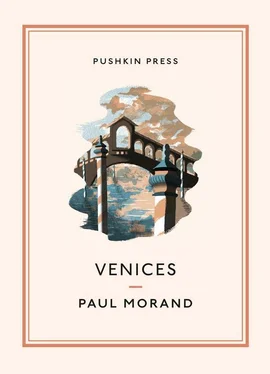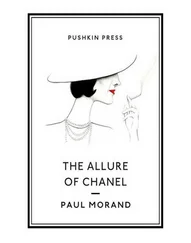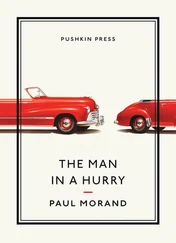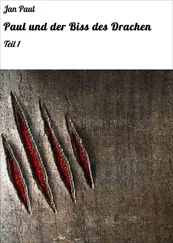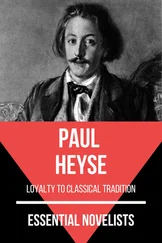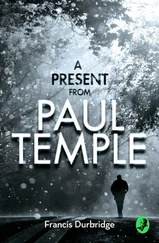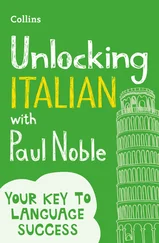1908,
VENICE SEEN THROUGH A
REAR-VIEW MIRROR
VENICE, which Proust called “the Mecca of the religion of Beauty”. Eight years earlier, Proust, whom I did not know at the time (although my father used to meet him at Madeleine Lemaire’s, as I would discover from Proust himself ten years later) had seen Venice through Ruskin’s eyes, but already he was aware how exacting this religion of Beauty was. “Ruskin did not conceive of Beauty as an object of pleasure, but as a reality that was more important than life…” Had Proust stopped at Jean Santeuil , he would have been nothing more than a hedonist; but he suffered, he searched beyond Beauty, he produced Swann . This is why our stern age forgives him for his duchesses. Naïve and foolish, it never occurred to me that we have duties towards Beauty; for me, she was just a way of evading the moral code; and Ruskin, as Bloch says, was a frightful bore.
I can hear myself saying and repeating: “You deny the past, you reject the present, you are hurtling towards a future that you will not see.” I want to speak plainly; this is why, overcoming my dislike of myself, I have taken Venice as my confidante; she will answer for me. In Venice I can think about my life, and do so more clearly than anywhere else; and it’s too bad if I can be spotted in the corner of the picture, like Veronese in Christ in the House of Levi.

Marcel Proust in Venice
The canals of Venice are black as ink; it is the ink of Jean-Jacques, of Chateaubriand, of Barrès, of Proust; to dip one’s pen into it is more than a Frenchman’s duty, it is a duty plain and simple.
Venice did not withstand Attila, Bonaparte, the Hapsburgs, or Eisenhower; she had something more important to do: survive; they believed they were building upon rock; she sided with the poets and decided to be built on water.
I have always thought of the railway station at Venice as a triumphal entrance; at that time it was not the present-day peristylar railway theatre of the Mussolini era. (“This is Venice, Venezia, Venedig: you’ll see what you shall see. Viva il Duce !”) Its predecessor consisted of three arcades which had turned green from the damp and had been blackened by the coal smoke. What has not changed is the green copper dome of San Simeone Piccolo; the bombs of two world wars, aimed at the railways lines, had spared it; to the left and in front of it are the trattorie where you dine, your head beneath the boxed bay trees and your feet in the water; there is less of a stench from the waters of these Fondamente Santa Lucia or dei Turchi than elsewhere; propelled through, the water is oxygenated here and does not give off the whiff of sulphurous hydrogen.
In those days, the gondolier was still king; proud at having surprised us by taking the short cut along the Rio Nuovo upon leaving the station and emerging suddenly at the ACCADEMIA, our man, manipulating his curved oar like a foil, reeled off the dazzling names of the palazzi : FOSCARI, GUISTINIANI, REZZONICO, LOREDAN, VENIER, DARIO… (Some of them, bent over with age and rheumatic stress, looked as if they were bowing at us.) Along the way, the gondolier, hostile still to the outboard engine, cocked a snook at the steamships that passed. Only yesterday, the vaporetti , the masters of the canals, had gone on strike to prevent the last of the gondolas from using the Rio Nuovo; the calm waters have been replaced by con stant rough waves.10
At last we arrived within sight of the Dogana with its statue of Fortune on top, which, at that time, was golden; today Fortune has turned verdigris. 11
This triumphant procession along the Grand Canal, “that register of Venetian nobility”, as Théophile Gautier put it, led us to the Traghetto San Maurizio, where the small apartment rented by my parents awaited us. The narrow street was deserted; there was just a basket which, at the cry of “ Bella uva !” (fine grapes), had been lowered on a rope down to the grape-seller below, and hoisted up again piled with muscat grapes for the lunch that had already been served. The mosquito nets had been folded parachute fashion above the beds, and the bedrooms smelled of dead gnats, killed by little triangles of beguiling but nauseating herbs; from the canal there rose up a reek of foul water, similar to the smell of vases from which someone has forgotten to remove the withered flowers.
In the morning, I was awoken by the hoarse voice of the vaporetto and by the striated reflections from the Canal on the almond green ceiling, with its plaster reliefs, or on the façades of the buildings that were flecked with light; for fifty centimes, the barber would come up and trim my beard (a marvellous attack on the bristles by the Italian razors, engraved in gold on steel, which each barber carried with him on weekdays). Nowadays, when I go around barefoot in espadrilles and without a tie all year round, I sometimes smile when I think of how I was attired at that time: white flannel trousers, white cotton socks, white felt hat, a butterfly knot and a stiff collar.
The rampino from the San Maurizio ferry greeted me with a cry of poppe! , waving his grubby hat (even poor people wore a hat; a hat they used to greet one with) as he held the gondola’s coupling hook with his other hand. He offered to carry me across the Canal, rather as Dandolo’s Serenissima offered to take the Crusaders as far as Byzantium. I did not make use of his services, but set off along the narrow street towards the Palazzo Pisani (painted at that time in that pale nacreous “coral” pink, the colour of scampi); I reached the Palazzo Morosini with its lofty ogives, and so Gothic in style that it looked English. Passing the churches of Santa Maria Zobenigo, San Stefano and San Vitale, I was on my way to meet my mother, after she had attended Mass, at San Moisè, whose façade, an assortment of overhangs and recesses, was white with the acidic droppings of the Venetian pigeons that can even eat into the stonework. Théophile Gautier was responsible for my love of this church, which, with its obelisks and astragals, is so perfectly reminiscent of the overture to Rossini’s Moisè . I drew back the red curtain (the same one as today, without those horrible doors with bars): there were more votive candles burning inside than in the Holy Sepulchre; the Jesuits’ confessional boxes, their baroque grilles as convoluted as a confiteor , buzzed with the whisper of sins; confessional boxes only came into existence, apparently, in the seventeenth century; that buttoned-up age was the first to feel that it should conceal its sins… I enjoyed stopping in front of the tomb of a Scotsman, John Law, the inventor of the banknote; this rococo monument was an apt one for the inventor of financial rococo (inflation is romantic, while deflation is classical).
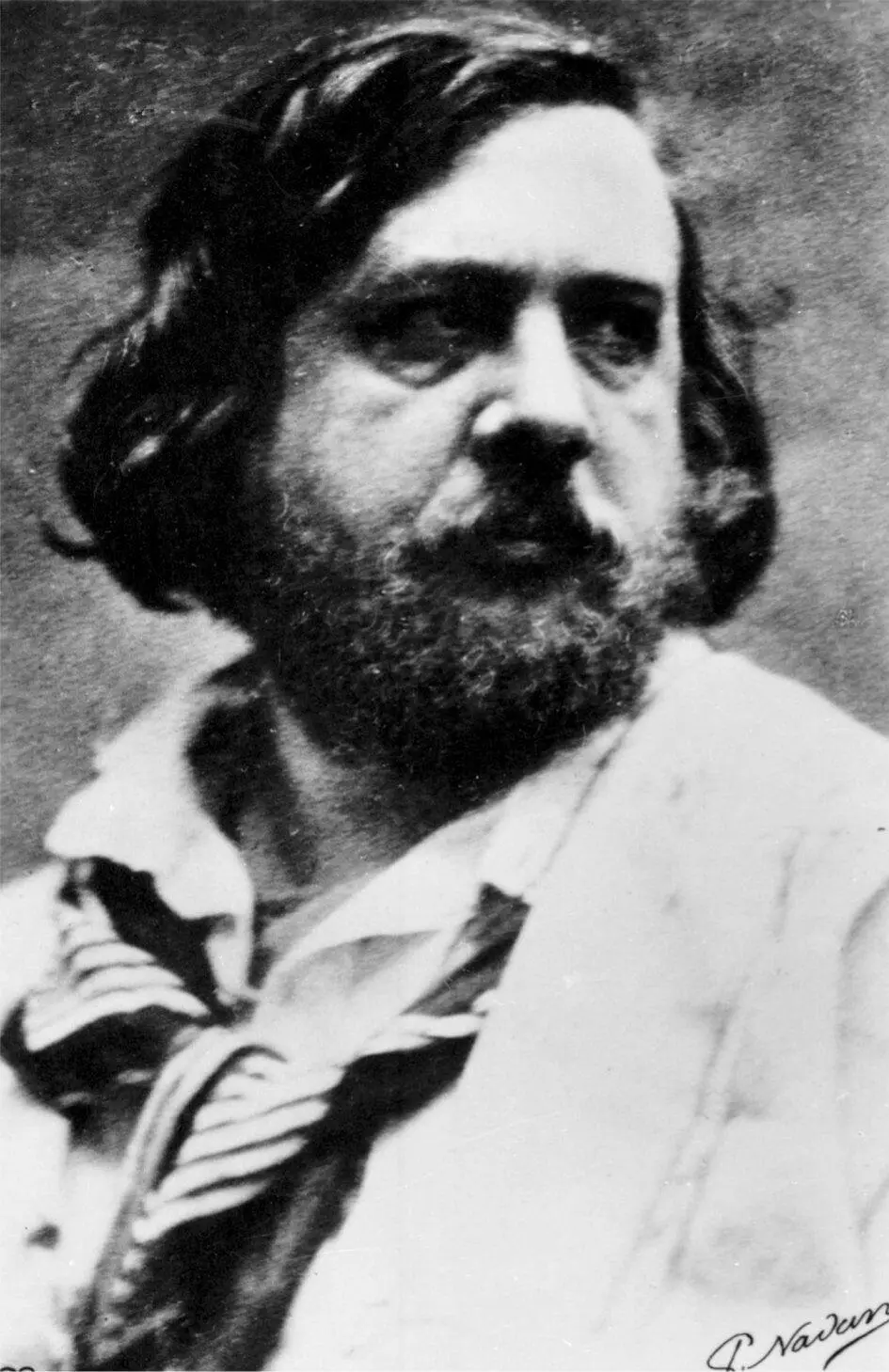
Théophile Gautier photographed by Paul Nadar
“If Palférine had any money, he would spend his life in Venice, passing his days in museums, his evenings at the theatre, and his nights with beautiful women” ( Balzac ). The Fenice was not open; as for beautiful women, I was too frightened of imitating Jean-Jacques [Rousseau], who found little consolation in his loneliness from a courtesan who almost got him plastered, from another tart who only had one nipple, or from the young girl of twelve who was so sexually immature that he contented himself with fatherly affection and teaching her music. Depriving oneself of women was painful in the evenings, but I would never have dared approach, as President De Brosses did after consulting the Tariffa delle putane di Venezia , the Marianna or Fornarina of a republic of demi-beavers.
Читать дальше
